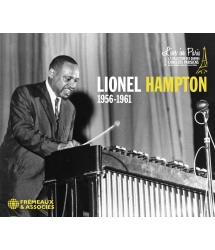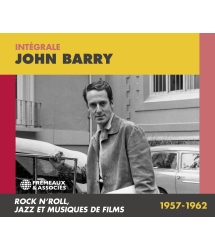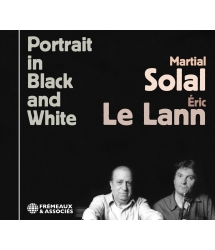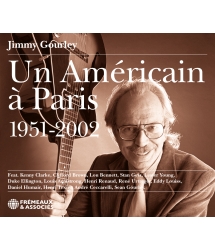- Our Catalog
- Philosophy
- Philosophers of the 20th century and today
- History of Philosophy (PUF)
- Counter-History and Brief Encyclopedia by Michel Onfray
- The philosophical work explained by Luc Ferry
- Ancient thought
- Thinkers of yesterday as seen by the philosophers of today
- Historical philosophical texts interpreted by great actors
- History
- Books (in French)
- Social science
- Historical words
- Audiobooks & Literature
- Our Catalog
- Jazz
- Blues
- Rock - Country - Cajun
- French song
- World music
- Africa
- France
- Québec / Canada
- Hawaï
- West Indies
- Caribbean
- Cuba & Afro-cubain
- Mexico
- South America
- Tango
- Brazil
- Tzigane / Gypsy
- Fado / Portugal
- Flamenco / Spain
- Yiddish / Israel
- China
- Tibet / Nepal
- Asia
- Indian Ocean / Madagascar
- Japan
- Indonesia
- Oceania
- India
- Bangladesh
- USSR / Communist songs
- World music / Miscellaneous
- Classical music
- Composers - Movie Soundtracks
- Sounds of nature
- Our Catalog
- Youth
- Philosophy
- News
- How to order ?
- Receive the catalog
- Manifesto
- Dictionnary











- Our Catalog
- Philosophy
- Philosophers of the 20th century and today
- History of Philosophy (PUF)
- Counter-History and Brief Encyclopedia by Michel Onfray
- The philosophical work explained by Luc Ferry
- Ancient thought
- Thinkers of yesterday as seen by the philosophers of today
- Historical philosophical texts interpreted by great actors
- History
- Books (in French)
- Social science
- Historical words
- Audiobooks & Literature
- Our Catalog
- Jazz
- Blues
- Rock - Country - Cajun
- French song
- World music
- Africa
- France
- Québec / Canada
- Hawaï
- West Indies
- Caribbean
- Cuba & Afro-cubain
- Mexico
- South America
- Tango
- Brazil
- Tzigane / Gypsy
- Fado / Portugal
- Flamenco / Spain
- Yiddish / Israel
- China
- Tibet / Nepal
- Asia
- Indian Ocean / Madagascar
- Japan
- Indonesia
- Oceania
- India
- Bangladesh
- USSR / Communist songs
- World music / Miscellaneous
- Classical music
- Composers - Movie Soundtracks
- Sounds of nature
- Our Catalog
- Youth
- Philosophy
- News
- How to order ?
- Receive the catalog
- Manifesto
- Dictionnary
BROTHER RAY : THE GENIUS
RAY CHARLES
Ref.: FA5350
Artistic Direction : JEAN BUZELIN
Label : Frémeaux & Associés
Total duration of the pack : 3 hours 28 minutes
Nbre. CD : 3
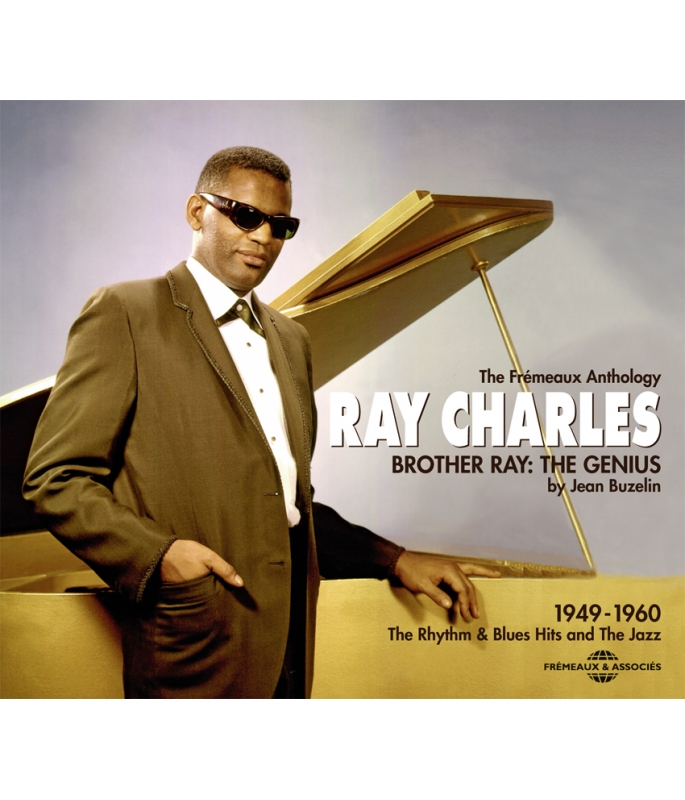
BROTHER RAY : THE GENIUS
BROTHER RAY : THE GENIUS
Ray Charles, The Genius, will forever remain one of the great innovators of the 20th century, in whatever genre. Jean Buzelin tells his extraordinary story in a triple CD album containing the 46 Rhythm & Blues hits that created his legend, along with 18 jazz sides for you to discover! Patrick FRÉMEAUX
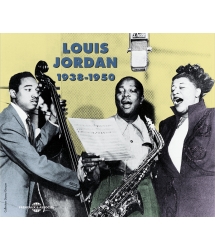
LOUIS JORDAN 1938 - 1950
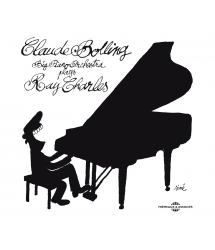
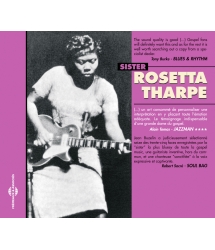
GOSPEL 1938-1943
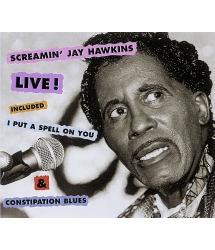
I PUT A SPELL ON YOU - LIVE 1988
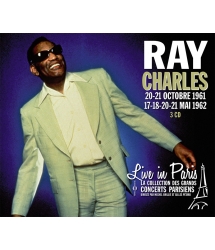
20-21 OF OCTOBER 1961 / 17-18-20-21 OF MAY 1962
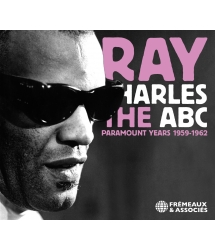
1959-1962
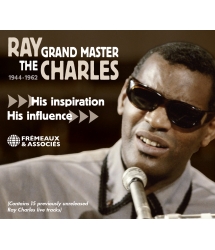
His Inspiration / His Influence 1944-1962
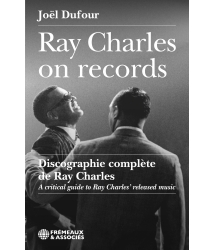
A critical guide to Ray Charles’ released music by...









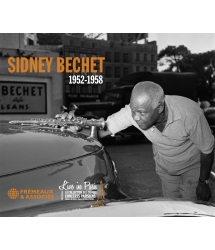
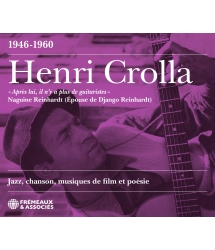
-
PisteTitleMain artistAutorDurationRegistered in
-
1Confession BluesRay CharlesRay Charles00:02:301949
-
2Baby Let Me Hold Your HandRay CharlesRay Charles00:03:021950
-
3Kissa Me BabyRay CharlesRay Charles00:03:111951
-
4Roll With Me BabyRay CharlesS. Sweet00:02:381952
-
5The Sun's Gonna Shine AgainRay CharlesS. Sweet00:02:391952
-
6Mess AroundRay CharlesA. Nugetre00:02:431953
-
7Feelin' SadRay CharlesJones Eddie00:02:511953
-
8It Should Have Been MeRay CharlesMosby Curtis00:02:441953
-
9Sinner's PrayerRay CharlesL. Glenn00:03:231953
-
10Don't You KnowRay CharlesRay Charles00:03:001953
-
11I've Got A WomanRay CharlesRay Charles00:02:571954
-
12Come Back BabyRay CharlesWalter Davis00:03:081954
-
13A Fool For YouRay CharlesRay Charles00:03:031955
-
14This Little Girl Of MineRay CharlesRay Charles00:02:331955
-
15BlackjackRay CharlesRay Charles00:02:211954
-
16GreenbacksRay CharlesR. Richard00:02:511954
-
17Mary AnnRay CharlesR. Richard00:02:481955
-
18Drown In My Own TearsRay CharlesHenry Glover00:03:221955
-
19Hallelujah I Love Her SoRay CharlesRay Charles00:02:361955
-
20Lonely AvenueRay CharlesD. Pomus00:02:371956
-
21Leave My Woman AloneRay CharlesRay Charles00:02:411956
-
22Ain't That LoveRay CharlesRay Charles00:02:541956
-
23Get On The Right Track BabyRay CharlesToby Turner00:02:201956
-
24Swanee River RockRay CharlesTraditionnel00:02:191957
-
PisteTitleMain artistAutorDurationRegistered in
-
1Talkin' Bout YouRay CharlesRay Charles00:02:521957
-
2Yes IndeedRay CharlesS. Olivier00:02:151958
-
3I Had A DreamRay CharlesRicky Harper00:02:551958
-
4You Be My BabyRay CharlesD. Pomus00:02:301958
-
5Rockhouse, Pt. I & IIRay CharlesRay Charles00:04:011956
-
6The Right TimeRay CharlesN. Brown00:03:291958
-
7That's EnoughRay CharlesRay Charles00:02:461957
-
8What'd I Say, Pt. I & IIRay CharlesRay Charles00:05:051959
-
9I Believe To My SoulRay CharlesRay Charles00:03:041959
-
10I'M Movin OnRay CharlesSnow Hank00:02:211959
-
11Don't Let The Suncatch You CryingRay CharlesJ. Greene00:03:461959
-
12Just For A ThrillRay CharlesL. Hardin00:03:261959
-
13Tell The TruthRay CharlesL. Pauling00:03:131959
-
14Sticks And StonesRay CharlesHenry Glover00:02:481960
-
15Early In The MorningRay CharlesL. Hickman00:03:031958
-
16My Baby (I Love Her Yes I Do)Ray CharlesRay Charles00:02:161959
-
17Worried Life BluesRay CharlesM. Merriweather00:03:061960
-
18Georgia On My MindRay CharlesCarmichael Hoagy00:03:361960
-
19Them That GotRay CharlesRicky Harper00:02:531959
-
20RubyRay CharlesMitchell Parish00:03:541960
-
21One Mint JulepRay CharlesR. Toombs00:03:071960
-
22I've Got News For YouRay CharlesR. Alfred00:04:331960
-
PisteTitleMain artistAutorDurationRegistered in
-
1The RayRay CharlesQuincy Jones00:03:591956
-
2Ain't Misbehavin'Ray CharlesT.Waller00:05:411956
-
3Doodlin' Pt. I & IIRay CharlesHorace Silver00:05:541956
-
4I Want A Little GirlRay CharlesB. Moll00:02:561957
-
5Cosmic RayRay CharlesRay Charles00:05:231957
-
6CharlesvilleRay CharlesRay Charles00:04:561957
-
7Soul MeetingRay CharlesM. Jackson00:06:031958
-
8The Spirit FeelRay CharlesM. Jackson00:03:431958
-
9Hard TimesRay CharlesP. F. Mitchell00:04:431958
-
10Sweet EyesRay CharlesBennie Crawford00:03:461958
-
11Come Rain Or Come ShineRay CharlesJohnny Mercer00:03:421959
-
12Let The Good Times RollRay CharlesF. Moore00:02:531959
-
13It Had To Be YouRay CharlesI. Jones00:02:441959
-
14Two Years Of TortureRay CharlesPercy Mayfield00:03:261959
-
15Alabamy BoundRay CharlesR.G. Desylva00:01:551960
-
16RosettaRay CharlesE. Hines00:02:321960
-
17Let's GoRay CharlesRay Charles00:02:441960
-
18I'M Gonna Move To The Outskirts Of TownRay CharlesW. Weldon00:03:431960
RAY CHARLES
The Frémeaux Anthology
RAY CHARLES
Brother Ray: The Genius
by Jean Buzelin
1949-1960
The Rhythm & Blues Hits and The Jazz
“La voix de Ray Charles ressemble plus à celle d’un homme de 50 ans qu’à celle d’un jeune homme. Il n’y a pas le moindre soupçon de jeunesse ou de frivolité” écrit David Ritz à propos des premiers enregistrements du chanteur. Et il ajoute : “La souffrance de cette voix appartient à Ray (…). Ce sont des blues dans toute leur pureté et toute leur simplicité (…). Il est déjà seul, déjà grandi, 20 ou 30 ans en avance sur lui-même, chantant comme s’il tournait depuis dix ans (1).”
La voix de Ray Charles est en effet unique, c’est une évidence que tout le monde partage, et chacun le reconnaît dès la première strophe. Durant tout le XXe siècle, il n’y a que trois ou quatre chanteurs américains (noirs) qui, dès leurs premiers enregistrements, possèdent leur voix définitive, mature, une voix qui n’est pas de leur âge. J’en citerai deux autres : Louis Armstrong et Otis Redding, laissant à chacun le choix de son quatrième. Et comme Louis Armstrong (2), Ray Charles a su, apparemment sans le moindre effort, s’approprier tous les genres de musiques (blues, jazz, gospel, soul, pop music, country & western…) et recréer n’importe quelle chanson pour la faire sienne, simplement grâce à sa voix. “Ma voix n’a jamais mué brutalement. En vieillissant, elle s’est affirmée d’elle-même, dit le chanteur. (…) Je n’ai jamais vraiment perdu ma première voix ni trouvé une voix toute neuve. Le timbre du gosse et celui de l’adulte se sont simplement mélangés (1).”Transcendant toutes les catégories, Ray Charles est l’un des rares chanteurs et musiciens qui possèdent un tel rayonnement universel qui fait de lui un monument de l’art du XXe siècle. Son visage barré par d’épaisses lunettes noires et sa silhouette “gesticulante” sont connus de tous et reconnaissables entre mille. Bien qu’il ne le crût pas lui-même, Ray Charles fut peut-être bien le génie dont le baptisa sa maison de disques pour des raisons commerciales : The Genius. Même si cette qualification subjective ne se mesure pas, nous nous garderons bien de démontrer le contraire.
Dans le film «Ray» de Taylor Hackford, que le chanteur, qui avait participé à son élaboration, n’eut hélas pas le temps de “voir” sortir sur les écrans en 2005, Jamie Foxx campe avec une étonnante vérité ce personnage hors du commun. Ce film, très réussi quoique non exempt de critiques, retrace avec beaucoup de soin et d’authenticité dans la reconstitution, l’histoire de Ray Charles depuis sa petite enfance, et sa lente mais inexorable ascension jusqu’aux plus hautes marches de la gloire, s’arrêtant à son entrée dans le show business. C’est le parti pris historique que, à notre modeste échelle, nous avons choisi : retracer la carrière du chanteur-pianiste au travers des disques, présentés ici dans l’ordre chronologique de leur sortie (3), qui ont accompagné cette ascension. Une décennie à jouer, chanter et produire des disques essentiellement pour sa communauté, ponctuée par ses entrées, d’abord modestes, dans les charts Rhythm & Blues (4), et qui s’achève par ses premiers hits nationaux en même temps que sa réputation franchit les barrières raciales avant de traverser les océans.
Ray Charles Robinson naît le 23 septembre 1930 à Albany (Géorgie) et passe sa petite enfance à Greenville, petite bourgade du nord de la Floride. D’origine et de condition fort modeste, il est élevé par sa mère avec son frère cadet George qui se noie accidentellement à l’âge de 4 ans sous ses yeux. Des yeux qui vont commencer à se brouiller avant de se refermer définitivement à 7 ans. Entre temps, il a déjà baigné dans un environnement musical : l’église baptiste de Silo où il va chanter avec sa mère, et le Red Wing Café, une petite épicerie-bazar où se trouve un piano dont joue fort bien le patron, Wylie Pitman, lequel n’hésite pas à faire grimper sur ses genoux le petit garçon de 3 ans pour lui apprendre les rudiments du boogie-woogie. Ray Charles n’oubliera jamais “Mr. Pit” et en parlera encore avec émotion et reconnaissance en 2003 à Clint Eastwood dans son film “Piano Blues”. En septembre 1937, grâce aux sacrifices familiaux, il est placé dans une institution pour aveugles à Saint-Augustine où il restera huit années. Il y apprendra le piano (méthode classique !) et la clarinette, organisera un petit ensemble vocal et, à 14 ans, composera ses premiers arrangements. Il écoute la radio : les big bands noirs et blancs (Jay McShann, Jimmie Lunceford, Lucky Millinder, Count Basie, Duke Ellington, Tommy Dorsey, Benny Goodman et Artie Shaw, son clarinettiste préféré), les chanteurs (Ella Fitzgerald, Bing Crosby, le Golden Gate Quartet), mais aussi les vedettes hillbilly (Jimmie Rodgers, Roy Acuff) et, bien sûr, les pianistes (Earl Hines, Teddy Wison et surtout Art Tatum). Mais par-dessus tout, c’est le chanteur-pianiste Nat King Cole qui le fascine au point de chercher à l’imiter le mieux possible. L’été, il retrouve le petit café de Mr. Pit et, l’oreille collée sur le juke-box, il passe les race records des pianistes Pete Johnson et Albert Ammons, des bluesmen Tampa Red, Washboard Sam, Blind Boy Fuller, des chanteurs vedettes Louis Jordan et Big Joe Turner… Voilà l’environnement musical dans lequel baigne le jeune Ray C. Robinson, un environnement représentatif des tendances musicales au tournant des années 30/40, et suffisamment vaste et ouvert pour que le musicien s’y forge de solides racines qu’il fera fructifier sa vie durant.
Mais sa mère meurt en 1945. Ray doit quitter l’école et se retrouve livré à lui-même. Désirant absolument se consacrer à la musique et à en vivre, il s’installe d’abord à Jacksonville. Il joue un peu de boogie, fait quelques remplacements, et, pour l’anecdote, rencontre le trompettiste Riley “Fats” Webb qui, plus tard, fera partie de son orchestre (5). Puis, vers 1946/47, il se rend à Orlando, toujours en Floride, où il joue dans des orchestres locaux (Joe Anderson, Sammy Glover). Une période difficile qui le voit essuyer un refus par Lucky Millinder lors d’une audition. De là date sa première composition, Confession Blues, qui sera plus tard son tout premier succès. Il se déplace à nouveau, à Tampa, joue avec Charlie Brantley (saxo alto) et dans le trio du batteur Manzy Harris où il peut également chanter. Il fait également partie d’un groupe de country & western, les Florida Boys (tous blancs sauf lui !). Mais, en 1948, il estime avoir fait le tour des possibilités dans la région et demande, à ce qu’il paraît, à son ami guitariste, Gossie D. McKee, de lui indiquer sur une carte des Etats-Unis le point le plus éloigné de Tampa : Seattle, au nord de la côte Ouest, dans l’État de Washington. En fait, ils cherchaient une ville industrielle prospère. Pénible traversée du pays en bus achevée, le voilà qui trouve un engagement dès le lendemain de son arrivée. Affinant son style dans une voix médiane entre Nat King Cole, versant jazzy, et Charles Brown, versant bluesy, il fait rapidement venir Gossie D. et complète son “McSon Trio” (6) avec le bassiste Milton Garred. Il abandonne également son nom qui ressemble trop à Ray “Sugar” Robinson, illustre boxeur de l’époque, et se fait appeler Ray Charles pour ses engagements au Elks Club puis au Rocking Chair.
C’est dans cet endroit qu’il rencontre un producteur, Jack Lauderdale, qui lui fait enregistrer son premier disque en février 1949 : Confession Blues qui le fait connaître (N°32 au Top 100 R&B annuel). Et c’est également à Seattle qu’il se lie d’amitié avec le tout jeune Quincy Jones qu’il retrouvera des années plus tard.Le siège de la petite compagnie Downbeat/Swingtime se trouvant à Los Angeles, Ray Charles se rend alors dans la cité californienne où il grave à nouveau plusieurs disques. Mais l’ère du trio s’achève au printemps 1950 lorsque Ray est engagé par le chanteur-guitariste Lowell Fulson, grande vedette du blues de l’époque, pour partir en tournée. Pianiste de l’orchestre dont il devient peu ou prou le directeur artistique, il peut également se produire en intermède dans son propre répertoire. Durant ces harassantes tournées, il est réellement confronté à la ségrégation raciale qui règne dans les états du Sud, compensées heureusement par les rencontres, notamment des grands quartettes de gospel dont les solistes, Ira Tucker (Dixie Hummingbirds), Claude Jeter (Swan Silvertones) ou Archie Brownlee (Five Blind Boys of Mississippi) l’impressionnent profondément et vont largement contribuer à l’évolution de sa propre expression vocale. Il a aussi le bonheur d’accompagner des gens comme T.Bone Walker, Big Joe Turner et, à l’Apollo de Harlem, la chanteuse comique Moms Mabley. Lorsque l’orchestre défait ses valises à Los Angeles, Ray en profite pour réaliser des disques et, avec Baby Let me Hold Your Hand (chanson dans l’esprit de Charles Brown dans laquelle il est accompagné par les deux tiers du King Cole Trio, son idole), il obtient, en novembre 1950, son premier succès national dans les charts Rhythm & Blues (N°7). L’année suivante, Kissa Me Baby, avec les musiciens de Fulson, qui ne passe pas non plus inaperçu (N°10), préfigure son orientation orchestrale future. “Pour la première fois, il cesse d’imiter et chante avec sa vraie voix, commente David Ritz. (…) Une voix rauque et râpeuse (…), une voix terriblement seule mais d’une sensualité frisant l’extase, et qui semble contenir toute la souffrance et toute la célébration de la race noire (1).”Désirant voler de ses propres ailes, et après avoir effectué une tournée avec l’orchestre du trompettiste Joe Morris, Ray Charles quitte Lowell Fulson et, en 1952, commence à voyager seul, se joignant au gré des chemins aux packages rhythm and blues qui sillonnent le circuit des théâtres et des dancings noirs.
Il a ainsi l’occasion de suivre le chanteur-harmoniciste Little Walter et ses Aces en 1953 et de jouer du saxophone-alto avec eux. À la fin de l’année précédente, il avait signé avec Atlantic, l’une des meilleures compagnies indépendantes de jazz et de rhythm and blues avec laquelle il effectue ses premiers enregistrements (Roll With Me Baby et Mess Around sont des succès d’estime, mais It Should Have Been Me grimpe à la 7e place du hit-parade R&B). À partir de l’été 1953, il séjourne quelques mois à la Nouvelle-Orléans, et en profite pour effectuer deux séances avec des musiciens locaux (Don’t You Know, N°10). Certains se trouvent à ses côtés pour accompagner le chanteur-guitariste Eddie “Guitar Slim” Jones qui décroche un étonnant N°1 avec The Things That I Use To Do. Ray lui empruntera son Feelin’ Sad, belle interprétation bluesy.Il est grand temps pour Ray Charles de former son propre orchestre. Poussé par les responsables d’Atlantic qui lui promettent une série d’engagements avec la chanteuse Ruth Brown, le chanteur-pianiste, alors au Texas durant l’été 1954, réunit un combo qui s’appuie sur les instruments à vent comprenant notamment les saxophonistes Don Wilkerson et David Newman, qui restera l’un de ses plus fidèles compagnons, lui-même jouant volontiers de l’alto (7). Ray commence à écrire de nombreuses chansons profanes en forme de gospel songs, ce qui constitue un nouveau genre de musique populaire qu’on n’appelle pas encore soul music. “1953, 54, 55 furent les années où je devins moi-même. J’ai ouvert les écluses (…), créant une musique qui, m’a-t-on dit après, n’avait jamais vu le jour. Si j’inventais quelque chose de nouveau, je ne m’en rendais pas compte. Dans mon esprit, je ne faisais que puiser davantage en moi. J’ai pris des morceaux de gospel et je me suis mis à les transposer en chansons normales (1).” Lors de sa première séance avec son orchestre dans un studio d’Atlanta à l’automne 1954, il enregistre I Got A Woman qui, propulsé sur la 2e marche du Top Ten R&B (8), restera l’un de ses grands classiques. Réalisé à Miami en avril 1955, A Fool For You atteint la même place (8). Ray Charles, qui a engagé une chanteuse, Mary Ann Fisher (à qui il dédiera sa Mary Ann), devient, à 25 ans, l’un des grandes vedettes du rhythm and blues au moment même de la déferlante rock‘n’roll. Si l’exceptionnel Drown In My Own Tears obtient à son tour une seconde place auprès de la clientèle noire (8), c’est Hallelujah I Love Her So (N°5) qui lui permet de toucher le jeune public blanc grâce à la radio et au disque, même s’il se démarque volontiers de la vague : “Je ne me suis jamais considéré comme faisant partie du rock’n’roll (1).”
Ray Charles est d’abord un jazzman et, dès 1956, Ahmet Ertegun et ses producteurs de chez Atlantic vont exploiter cet aspect de sa musique en lui faisant réaliser plusieurs albums 33 tours — toutes ses chansons paraissaient sur 78 puis 45 tours — dont deux en compagnie du vibraphoniste Milt Jackson.Parallèlement, Ray entend un trio vocal, les Cookies, accompagner le chanteur Chuck Willis. Impressionné et présageant le parti gospel soul qu’il pourrait tirer de l’association entre un groupe vocal féminin et sa propre voix, il propose aux chanteuses de participer à l’un de ses enregistrements en mai 1956 (Lonely Avenue, N°6) et, trois semaines plus tard, les embauche à plein temps ! Le travail ne manque pas (plus de 300 gigs par an). Mary Ann Fisher restera encore une bonne année puis quittera les ex-Cookies devenues Raeletts. Arrivé au début de l’année 1958, le saxophoniste Bennie “Hank” Crawford va prendre une place importante dans l’orchestre dont il deviendra le premier “vrai” directeur musical ; c’est lui qui retranscrit sur partitions les notes que le chanteur lui dicte.Le prestigieux Carnegie Hall de New York lui ouvre ses portes en novembre 1957 dans un programme qui ne réunit rien moins que Billie Holiday, l’une de ses chanteuses favorites depuis son enfance, Dizzy Gillespie, Chet Baker, Thelonious Monk et Sonny Rollins (9), mais la véritable consécration auprès d’un public d’amateurs blancs est obtenue par le passage au festival de Newport le 5 juillet 1958. Ray Charles y obtient un triomphe auquel contribue sa chanteuse soliste Margie Hendrix dans un The Right Time hurlé déchirant (10). La version studio de ce même morceau (qui sera classé N°5), est enregistrée à l’automne.Cette ouverture vers un nouveau et large public conduit Ray Charles à abandonner à brève échéance les pénibles tournées du circuit des dancings noirs. Pourtant, c’est à la fin d’une énième prestation dans une salle de bal du Midwest qu’il se met à improviser librement What’d I Say, bientôt rejoint par l’orchestre et les Raeletts avec qui le dialogue s’installe. Enchanté du résultat, le chanteur, s’accompagnant au piano électrique, reprend en studio, en février 1959, ce morceau informel qui, à la surprise générale, grimpe non seulement à la 1e place du hit-parade R&B, mais envahit le marché pop, puis se répand partout, le petit 45 tours se mettant à tourner inlassablement sur les tourne-disques du monde entier ! What’d I Say sur orbite, Ray Charles peut s’attaquer à quelques-uns de ses rêves. D’abord enregistrer avec une section de cordes sur des scores de Ralph Burns, dont il apprécie le travail depuis ses arrangements pour Woody Herman, Puis avec un big band conduit par son ami Quincy Jones.
Cette nouvelle orientation ne le détourne d’ailleurs pas de sa communauté qui continue à lui acheter ses disques (les ballades Don’t Let The Sun Catch You Crying et Just For A Thrill sont respectivement N°17 et 16).Une période s’achève pourtant et c’est le moment que le chanteur-pianiste choisit pour répondre à l’offre très avantageuse que lui propose la puissante compagnie ABC-Paramount. Ne s’étant jamais considéré comme un véritable compositeur, il va choisir un répertoire qui lui convient et s’entourer d’arrangeurs avec qui il peut travailler en osmose. Cuivres, bois, cordes, chœurs élargissent la palette sonore destinée à servir d’écrin à sa voix merveilleuse. Il n’abandonne pas pour autant son orchestre et ses Raeletts, pas plus qu’il n’abandonne ses frères de couleur à qui il continue d’offrir des singles rythmés de premier choix comme Stick And Stones (N°2) ou Them That Got (N°10). Mais la production s’oriente largement vers des albums sophistiqués. Dans le premier à paraître figure une ancienne chanson de Hoagy Carmichael, Georgia On My Mind, dont il donne une version inoubliable (et qui fait presque oublier celle de Louis Armstrong !). Elle devient sa chanson et, publiée également en 45 tours, accède, pour la première fois, à la tête des ventes Pop, ce qui ne l’empêche pas de toucher aussi sa communauté (N°3). Concrétisation de ses rêves, il peut constituer son propre grand orchestre, sur les bases de son octette et avec le renfort de choix du baryton Leroy Cooper, avec lequel il s’envole pour effectuer ses premières tournées outre-Atlantique — il passe à l’Olympia de Paris en octobre 1961 (11). Il apparaît sur les grandes chaînes de télévision américaines, Ray Charles est entré dans le gotha des stars du show business.Pendant ce temps, un album réalisé sous la responsabilité de Quincy Jones et publié sur le prestigieux label de jazz Impulse, qui appartient à ABC, lui procure, grâce à deux 45 tours qui en sont extraits, un nouveau N°1 R&B avec l’instrumental One Mint Julep et un N°8 avec I’ve Got News For You qu’il transforme, avec son chant et son orgue, en véritable blues ; le blues de ses débuts qu’il n’abandonnera jamais, témoins les reprises magistrales de classiques comme Worried Life Blues ou Outskirts Of Town. Ray Charles, qui a toute latitude pour composer ses albums, décide, en 1962, de s’essayer au répertoire country & western qu’il aimait beaucoup durant son enfance (12), malgré la réticence de ses producteurs : un répertoire qui appartient aux Blancs du Sud !
Ce coup d’essai est un coup de génie puisque I Can’t Stop Loving You grimpe simultanément aux trois premières places dans les catégories Pop, Rhythm & Blues et Country & Western. Le plus grand succès de sa carrière qui en connaîtra bien d’autres et ne s’achèvera qu’à la veille de sa mort, des suites d’un cancer du foie, le 10 juin 2004 dans sa maison de Beverly Hills.The Genius s’est tût, mais sa voix unique et inoubliable n’a pas fini de toucher les cœurs par-delà le monde entier, et sans doute pour longtemps encore. La voix d’un petit gamin noir, pauvre et aveugle, qu’on appelait plus amicalement Brother Ray, le surnom qu’il préférait.En même temps que sa popularité dans le rhythm and blues s’accélérait, Ray Charles commence à enregistrer des disques de jazz, qui pour la plupart paraissent en album 33 tours et sont destinés prioritairement à une tout autre clientèle, celle des amateurs blancs en général. C’est cet aspect souvent moins connu de sa musique que nous avons voulu mettre en valeur à côté de ses succès commerciaux. Dès 1956, en trio (avec Oscar Pettiford) puis avec son septette régulier, il enregistre des thèmes de jazz, des morceaux “classiques” comme des compositions funky. Puis, en 1957 et 58, ce sont deux séances en compagnie notamment de Milt Jackson qui, outre de son vibraphone habituel, joue du piano (et même de la guitare), Ray lui-même embouchant parfois son alto. C’est d’ailleurs avec son saxo qu’il apparaît sur la scène de Newport (dans The Spirit Feel de Jackson précisément, rebaptisé à tord Hot Rod). Il offre ensuite à son ami David Newman un album entier, «Fathead». Puis, en juin 1959, Ray Charles se trouve pour la première fois à la tête d’un big band dirigé par Quincy Jones ; il joue du piano et chante (Let The Good Times Roll). Passé chez ABC, et en particulier pour son album Impulse bien nommé “Genius + Soul = Jazz”, il poursuivra largement dans cette voie. Varié, multiple et cohérent, tel est l’art de Ray Charles dans toute sa vastitude et sa grandeur.
Jean BUZELIN
© Frémeaux & Associés
Notes :
1) Ray Charles & David Ritz, Le Blues dans la peau (Presses de la Renaissance, 1979).
2) Otis Redding est malheureusement mort trop tôt, à 26 ans. Mais dès ses premiers enregistrements, à 21 ans, sa voix est déjà “faîte”.
3) Et non pas dans l’ordre chronologique de leur enregistrement.
4) Les classements, correspondant aux ventes de disques, proviennent du magazine Billboard. La compilation effectuée par Joel Whitburn, Top R&B Singles 1942-1999 (Record Research Corp.), donne parfois des positions plus favorables.
5) Il est dans l’orchestre qui enregistre à Miami en 1955 (cf. CD1, plages 13-14).
6) Ou Maxin Trio, comme il est imprimé sur les étiquettes des 78 tours.
7) “Mon jeu d’alto, pour être honnête avec vous… La personne que j’ai adorée — bien que je n’ai jamais eu l’ambition de m’approcher si peu que ce fut de son jeu — mon idole était Charlie Parker… Je veux dire qu’il était vraiment le sommet pour moi. Il représente pour moi ce qu’Art Tatum a été pour le piano.” Ray Charles répondant à Joël Dufour en 1989 (cf. Soul Bag N°176, septembre 2004).
8) La première pour Joel Whitburn.
9) Contrairement à ses souvenirs réunis par David Ritz dans Le Blues dans la peau, c’est avec Dinah Washington (et James Moody) et non avec Billie Holiday, qu’il partagera l’affiche du Carnegie Hall pour un autre concert, le 17 février 1959.
10) Le concert de Ray Charles eut lieu la veille de celui de Mahalia Jackson (voir Complete Mahalia Jackson Vol.8, FA 1318). Tous deux bénéficieront énormément de leur passage dans ce festival.
11) Avec son octette et ses Raeletts, il avait déjà participé au festival d’Antibes-Juan-les-Pins en juillet 1961.
12) Il avait enregistré sa première chanson country, I’m Movin’ On de Hank Snow, lors de sa dernière séance Atlantic (N°11 au Top R&B).
Une grande partie des disques originaux utilisés pour cette réédition provient de la collection de mon frère Patrice Buzelin que je remercie vivement.
Photos : Patrick Bertrand, Lee Friedlander, James Kriegman, Montague Everett, Howard Morehead, X (D.R.)
Nos sincères remerciements vont à Joël Dufour, grand connaisseur de l’œuvre de Ray Charles, qui nous a épaulé durant toute la réalisation de ce coffret.
english notes
RAY CHARLES
BROTHER RAY: THE GENIUS.
The Rhythm & Blues Hits + The Jazz
1949-1960
Writing about Ray Charles’ earliest recordings, David Ritz declared “Ray Charles’ voice is more like that of a man of 50 than a young man, no trace of youth or frivolity. The suffering belongs to Ray … these are purely and simply the blues … He’s already great, already 20 or 30 years ahead of himself, singing as though he’d been doing it for ten years.”(1) Everyone agrees that his voice is unique, immediately recognisable. Throughout the 20th century there were only 3 or 4 black American singers whose first recordings revealed an already mature voice that would remain their hallmark e.g. Louis Armstrong and Otis Redding (2). And, as effortlessly as Armstrong, Ray Charles’ range covered all types of music (blues, jazz, gospel, soul, pop, country & western…) that he made his own. He told David Ritz that his voice had never undergone any sudden changes – it had simply developed by itself - he had never lost his first voice or found a new one (1).Cutting across all categories, Ray Charles’ universal stature makes him an artistic icon of the 20th century. His dark glasses and writhing silhouette are immediately recognisable. Although he didn’t believe it himself perhaps he really was “The Genius” that his recording company dubbed him for commercial reasons. We would certainly not quarrel with this description.In Taylor Hackford’s film “Ray” in 2005, which sadly the singer himself (who had followed its making) did not live to see, Jamie Foxx gives an outstanding portrayal of this very unusual character. The film, although receiving some negative criticism, is an authentic depiction of the Ray Charles story from his childhood, through his slow but unstoppable rise to the top of the artistic ladder, ending with his entry into show business. We have also opted for this approach in retracing his career through his recordings, presented here in chronological order (3). A decade playing, singing and performing and recording mainly for his own people, interspersed by regular appearances in the Rhythm & Blues charts (4), culminating in his first national hits when his reputation crossed racial barriers, before finally spreading worldwide.Ray Charles Robinson was born 23 September 1930 in Albany, Georgia, and spent his childhood in the small town of Greenville, Florida. He was brought up by his mother in virtual poverty alongside his younger brother George who, at the age of four, drowned accidentally in front of him.
His sight had already begun to deteriorate and he became completely blind by the time he was seven. However, he was already surrounded by music: the Silo Baptist Church where he sang with his mother and the Red Wing Café, a small local store with a piano regularly played by its owner Wylie Pitman who would take the 3-year-old Ray on his knees and teach him the rudiments of boogie-woogie. Ray Charles never forgot “Mr. Pit” and talked of him very emotionally to Clint Eastwood in the film “Piano Blues”. The family scrimped and saved and, in September 1937, sent him to the St. Augustine School for the Blind where he spent 8 years. Here he learnt classical piano and clarinet, organised a small vocal group and, at the age of 14, composed his first arrangements. He listened to the radio: both black and white big bands (Jay McShann, Jimmie Lunceford, Lucky Millinder, Count Basie, Duke Ellington, Tommy Dorsey, Benny Goodman and Artie Shaw, his favourite clarinettist), vocalists (Ella Fitzgerald, Bing Crosby, the Golden Gate Quartet) and also hillbilly stars (Jimmie Rodgers, Roy Acuff) and, of course, pianists (Earl Hines, Teddy Wilson and especially Art Tatum). But it was Nat King Cole above all that he tried to imitate. Each summer he returned to Mr. Pit’s café where he played all the race records on the juke box: pianists Pete Johnson and Albert Ammons, bluesmen Tampa Red, Washboard Sam, Blind Boy Fuller and the famous vocalists Louis Jordan and Big Joe Turner. This total immersion into every musical aspect of the 30s/40s provided the solid basis that Ray C. Robinson built on throughout his life. Following his mother’s death in 1945, Ray had to leave school and fend for himself. Interested only in making a living from music, he first settled in Jacksonville. He played a little boogie, getting the odd gig here and there and meeting up with trumpeter Riley “Fats” Webb, who later became part of his band (5). Then, around 1946/47, he moved to Orlando, where he played with local bands (Joe Anderson, Sammy Glover). But things were difficult and he failed an audition with Lucky Millinder. His first composition, Confession Blues, later to become his very first hit, dates from this period. He moved on to Tampa where he played with Charlie Brantley (alto sax) and in drummer Manzy Harris’ trio where he got the chance to sing. He also played with an all-white country & western group.
However, in 1948, deciding the region had nothing more to offer him, he asked his friend guitarist Gossie D. McKee (or at least so the story goes!) to point out on a map the furthest point from Tampa: Seattle, Washington, on the west coast. In fact, they were looking for a rich, industrial town. Arriving after an exhausting cross-country bus journey, he immediately got a job. Adapting his vocal style to a cross between a jazzy Nat King Cole and a bluesy Charles Brown, he invited Gossie D. to join him and completed his “McSon” trio with the addition of bassist Milton Garred. It was at this point that he changed his name, too similar to that of the famous boxer of the time Sugar Ray Robinson, to Ray Charles for his stints at the Elks Club and later at the Rocking Chair. Here he met producer Jack Lauderdale who arranged for him to record his first disc in February 1949: Confession Blues that made him known (N°32 in the annual Top 100 R & B). It was also in Seattle that he became friendly with the young Quincy Jones whom he would team up with years later. As the head office of the small Downbeat/Swingtime label was in Los Angeles, Ray went there to cut several records. But the trio folded in spring 1950 when Ray was hired by the popular blues singer/guitarist Lowell Fulson to go on tour. Hired as the band pianist, he more or less became their artistic director and was also able to do his own repertoire during the intervals. While these exhausting tours brought him face to face with the rampant racial segregation in the south, they also gave him the opportunity of meeting up with well-known musicians, especially the great Gospel quartets whose soloists, Ira Tucker (Dixie Hummingbirds), Claude Jeter (Swan Silverstones) and Archie Brownlee (Five Blind Boys of Mississippi) made a deep impression on him and influenced his own development as a vocalist. He also accompanied the likes of T. Bone Walker, Big Joe Turner and, at the Apollo, the comedian Moms Mabley. Ray took advantage of the tour stopping off in Los Angeles to make some more recordings including the Charles Brown influenced Baby Let Me Hold Your Hand, accompanied by two thirds of the Nat King Cole Trio. In November 1950 this reached N°7 in the Rhythm & Blues charts, his first national hit. The following year Kiss Me Baby, with Fulson’s musicians, reached N°10, giving a foretaste of what would become his orchestral orientation.
Determined to make it alone, after finishing a tour with trumpeter Joe Morris, Ray Charles left Lowell Fulson and, in 1952, began to travel on his own, joining up wherever possible with the rhythm and blues packages that traversed the black theatre and dance hall circuit. Hence in 1953 he teamed up with the harmonica player Little Walter and his Aces, playing alto sax. At the end of 1952 he had signed up with Atlantic, one of the best jazz and rhythm & blues companies, with whom he made his first recordings (although Roll With Me Baby and Mess Around were well received, it was It Should Have Been Me that reached 7th place in the R&B hit parade). From the summer of 1953 he spent several months in New Orleans where he recorded two sessions with local musicians (Don’t You Know, N°10). Alongside several others he accompanied singer-guitarist Eddie “Guitar Slim” Jones on The Things That I Used To Do, a surprising N°1. Ray borrowed his Feelin’ Sad in a beautiful bluesy interpretation. It was high time for Ray Charles to form his own band. Encouraged by Atlantic, who promised him a series of gigs with vocalist Ruth Brown, while in Texas in summer 1954, Ray got together a combo relying on wind instruments, in particular sax players Don Wilkerson and David Newman, the latter becoming one of his regular sidemen, also sometimes heard on alto (7). Ray also began to write secular songs in a gospel form, creating a new type of popular music that would become known as soul music. In autumn 1954 he did his first session with his band for Atlanta: I Got A Woman shot up to N°2 in the Top Ten R&B (8) and remains one of his great classics. Cut in April 1955 A Fool For You reached the same spot (8). Meanwhile, he had hired vocalist Mary Ann Fisher (to whom he dedicated Mary Ann) and had become, at the age of 25, a rhythm and blues star just as rock’n’roll was bursting on to the scene. While Drown In My Own Tears was voted into second place by the black audience, it was Hallelujah I Love Her So (N°5) that confirmed his popularity with young whites, thanks to his records and radio. However, he personally never considered himself part of rock’n’roll (1) Ray Charles was above all a jazzman and, from 1956 on, Ahmet Ertegun and his fellow producers at Atlantic exploited this aspect of his music by releasing several 33 rpm albums – all his songs appeared on 78s and then 45s – including two where he was accompanied by Milt Jackson on vibes.About this time Ray heard and was impressed by the vocal trio “The Cookies” backing singer Chuck Willis.
Deciding he could develop a “gospel soul” aspect by blending his own voice with a female choir, he invited the group to join him on a recording in May 1956 (Lonely Avenue, N°6) and, three weeks later, hired them full time! There was no shortage of work (over 300 gigs a year). Mary Ann Fisher stayed on another year before leaving the ex-Cookies, now dubbed the Raeletts. Early 1958 saxophonist Bennie “Hank” Crawford arrived to play an important part in the orchestra, becoming the first real musical director: it was he who wrote the scores based on the notes Ray dictated to him.And then, in November 1957, Ray appeared at the legendary Carnegie Hall in a star-studded programme including Billie Holiday, one of his favourite singers since his childhood, Dizziy Gillespie, Chet Baker, Thelonious Monk and Sonny Rollins (9). However, the moment when he was truly adopted by white fans came at the Newport Festival on 5 July 1958. Backed up by his female vocalist Margie Hendrix on a heartrending version of The Right Time, Ray Charles brought the house down (10). The studio version was recorded in the autumn and reached N°5. This exposure to a wider public led Ray Charles to give up, at least for the time being, his demanding tours of the black dance hall circuit. However, at the end of an umpteenth performance in a club in the Mid-West he began improvising on What’d I Say, and the band and Raeletts soon joined in. Delighted with the result the singer, accompanying himself on amplified piano, took it up again in the recording studios in February 1959. To everyone’s surprise it not only reached the top of the R&B hit parade but invaded the pop market and the 45 was soon being played throughout the world! On the back of this, Ray Charles felt he could now make some of his dreams come true. First to record with a string section some of Ralph Burns scores, whose arrangements for Woody Herman he greatly admired.
Then with a big band led by his friend Quincy Jones. This new direction did not, however, lead him to neglect his own black audience who continued to buy his records (the ballads Don’t Let The Sun Catch You Crying and Just For A Thrill at N°17 and 16 respectively).This was the moment that Ray decided to accept the lucrative offer made to him by ABC-Paramount. Never having seen himself as a real composer, he chose a suitable repertoire and arrangers who mirrored his own approach. Brass, woodwind, strings and choral groups provided the sound backing to his superb voice. However, he abandoned neither his orchestra nor the Raeletts, nor his black brothers for whom he still made excellent singles (Stick And Stones N°2 and Them That Got N°10), although most of the issues were more sophisticated albums. The first to appear featured an unforgettable version of an old song by Hoagy Carmichael, Georgia On My Mind (almost better than Armstrong’s!). It became his song and, issued on 45, for the first time headed the Pop sales, yet still appealing to black audiences (N°3). He could now achieve his dream of forming his own big band, based on his octet with the addition of baritone Leroy Cooper who accompanied him on his first overseas tour when he played the Paris Olympia in October 1961 (11). Appearing on all the big American TV channels, Ray Charles had now become a star of show business. Meanwhile, two 45s taken from an album made under the direction of Quincy Jones for the prestigious Impulse label, part of ABC, gained him a further N°1 R&B spot with One Mint Julep and a N°8 with I’ve Got News For You which his vocal and organ transformed into a real blues. That he never abandoned these blues of his childhood is evident on his superb interpretations of old classics e.g. Worried Life Blues or Outskirts Of Town. As the decision was now his, in 1962, in spite of some reticence on the part of his producers, he decided to try country & western which he had loved as a child (12): a southern white repertoire!
A brilliant decision for I Can’t Stop Loving You simultaneously reached the top three spots in Pop, Rhythm & Blues and Country & Western. The greatest hit of his career that would see many more before his death from cancer on the 10 June 2004.The Genius was silenced but his unique and unforgettable voice continues to touch hearts everywhere and will long continue to do so. The voice of a small black kid, known as Brother Ray, the nickname he preferred. Alongside his growing popularity in rhythm and blues, Ray Charles began to make jazz records, mostly 33rpm albums, aimed at white fans in general. From 1956 on, in trio (with Oscar Pettiford) then with his regular septet, he recorded jazz classics in a funky style. 1957 and 58 saw two sessions, accompanied in particular by Milt Jackson on piano in addition to his usual vibes (and even guitar). Ray himself occasionally took up his alto. Moreover, it was with his sax that he appeared at Newport (on Jackson’s The Spirit Feel renamed Hot Rod). He then gave over an entire album, “Fathead”, to his friend David Newman. Finally, in 1959, Ray for the first time fronted a big band led by Quincy Jones when he played piano and sang (Let The Good Times Roll). He pursued this vein with ABC, especially on the Impulse album “Genius + Soul = Jazz”. Variety and multiplicity, together with an underlying coherence, are at the heart of Ray Charles’ greatness.
Adapted from the French text of Jean BUZELIN by Joyce WATERHOUSE
© Frémeaux & Associés
Notes:
1. Ray Charles & David Ritz, Brother Ray, Ray Charles’ Own Story (Da Capo, 2005).
2. Sadly Otis Redding died aged only 26 but his first recordings when he was 21 reveal an already mature voice.
3. And not in chronological order of recording.
4. The ranking, corresponding to sales, is from Billboard. That made by Joel Whitburn, Top R&B Singles 1942-1999 (Record Research Corp.) sometimes gives more favourable placings.
5. He was in the orchestra that recorded in Miami in 1955 (cf. CD1, tracks 13-14)
6. Or Maxin Trio, as printed on the 78 labels.
7. “My alto playing, to be honest … The person I loved … although I never aspired to play like him … my idol was Charlie Parker … I mean he was really the tops for me. He represented for me what Art Tatum was on piano.” (Ray Charles speaking to Joël Dufour in 1989 (Soul Bag N°176, September 2004).
8. The first for Joel Whitburn.
9. Contrary to what he told David Ritz , it was with Dinah Washington (and James Moody) and not Billie Holiday that he shared the bill at Carnegie Hall for another concert 17 February 1959.
10. The Ray Charles concert took place the eve of Mahalia Jackson’s (see Complete Mahalia Jackson Vol. 8, FA 1318). Both benefited enormously from taking part in the festival.
11. With his octet and the Raeletts he had already appeared at the Antibes/Juan-le-Pins Festival in July 1961.
12. He had recorded his first country song, Hank Snow’s I’m Moving On, at his last Atlantic session (N°11 Top R&B).
Many of the original records used for this compilation are from the collection of my brother Patrice Buzelin to whom grateful thanks.
Photos: Patrick Bertrand, Lee Friedlander, James Kriegman, Montague Everett, Howard Morehead, X (D.R.)
Thanks also to Joël Dufour, a Ray Charles great specialist, for his support throughout this work.
CD 1
CONFESSION BLUES (R. Charles) DB 171B N°2*
BABY LET ME HOLD YOUR HAND (R. Charles) ST 250A+ N°7 5
KISSA ME BABY (R. Charles) 274A+ N°10 8
ROLL WITH ME BABY (S. Sweet) A-891
THE SUN’S GONNA SHINE AGAIN (S. Sweet) A-890
MESS AROUND (A. Nugetre) 1069
FEELIN’ SAD (E. Jones) A-1109
IT SHOULD HAVE BEEN ME (M. Curtis) A-1065-2 N°7 5
SINNER’S PRAYER (L. Glenn - L. Fulson) A-1068
DON’T YOU KNOW (BABY) (R. Charles) A-1187 N°10
I’VE GOT A WOMAN (R. Charles - R. Richard) A-1383 N°2 1
COME BACK BABY (W. Davis - arr. R. Charles) A-1385 N°4
A FOOL FOR YOU (R. Charles) A-1513 N°2 1
THIS LITTLE GIRL OF MINE (R. Charles) A-1514 N°9
BLACKJACK (R. Charles) A-1382 N°8
GREENBACKS (R. Richard) A-1384 N°5
MARY ANN (R. Charles) A-1767-3
I’LL DROWN IN MY OWN TEARS (H. Glover) A-1768 N°2 1
HALLELUJAH I LOVE HER SO (R. Charles) A-1769-1 N°5
LONELY AVENUE (D. Pomus) A-1998 N°8 6
LEAVE MY WOMAN ALONE (R. Charles) A-2000
AIN’T THAT LOVE (R. Charles) A-2232 N°11 9
GET ON THE RIGHT TRACK BABY (T. Turner) A-2233
SWANEE RIVER ROCK (Trad. - arr. R. Charles) A-2706 N°14
*Position des titres classés au Top 30 R&B. En maigre, celles données par Joel Whitburn
(1) The Maxin Trio : Ray Charles (p, voc), Gossie D. McKee (g), Milton S. Garred (b). Seattle, 02/1949.
(2) Ray Charles Trio : Ray Charles (p, celeste, voc), Oscar Moore (g), Johnny Miller (b). Los Angeles, 24/11/1950.
(3) Ray Charles (p, voc, arr) with Orchestra : Billy Brooks, Fleming Askew (tp), Marshall Royal, Earl Brown (as), Stanley Turrentine, Maurice Simon (ts), Charles Waller (bs), Frank McClure (b), Eddie Piper (dm). Los Angeles, ca. 05-06/1951.
(4-5) Ray Charles (p, voc) with prob. Jesse Drakes, unknown (tps), prob. Sam Taylor (ts), Dave McRae (bs) & unknown (saxes), unknown (g), prob. Lloyd Trotman (b), prob. Connie Kay (dm), Jesse Stone (arr). New York City, 11/09/1952.
(6, 8-9) Ray Charles (p, voc) with Jesse Drakes (tp), Freddie Mitchell, Pinky Williams (ts), Dave McRae (bs), Mickey Baker (g), Lloyd Trotman (b), Connie Kay (dm), Jesse Stone (arr). NYC, 17/05/1953.
(7) Ray Charles (p, voc, arr) with Edgar Blanchard’s Band : Auguste “Dimes“ Dupont (as), Warren Hebrard (ts), unknown (bs), Edgar Blanchard (g), Frank Fields (b), Alonzo Stewart (dm). New Orleans, 18/08/1953.
(10) Ray Charles (p, voc, arr) & His Orchestra : Wallace Davenport, Frank Mitchell (tp), Warren Bell (as), Joe Tillman (ts), Charles Burbank (bs), Lloyd Lambert (b), Oscar Moore (dm). New Orleans, 04/12/1953.
(11-12, 15-16) Ray Charles (p, voc, arr) & His Orchestra : Joe Bridgewater, Charles “Clanky“ Whitley (tp), Don Wilkerson (ts), David “Fathead“ Newman (bs), Wesley Jackson (g), Jimmy Bell (b), Glenn Brooks (dm). Atlanta, 18/11/1954.
(13-14) Ray Charles (p, voc, arr) & His Orchestra : Joe Bridgewater, Riley Webb (tp), Don Wilkerson (ts, voc on 14), David Newman (as, bs, voc on 14), Roosevelt “Whiskey“ Sheffield (b), William Peeples (dm), Mary Ann Fisher (voc on 14). Miami, 23/04/1955.
(17-18-19) Ray Charles (p, voc, arr) & His Orchestra : Joe Bridgewater, Joshua “Jack“ Willis (tp), Don Wilkerson (ts), Cecil Payne (bs), Paul West (b), David “Panama“ Francis (dm), female voc group : “Boo“, unknown, Mary Ann Fisher + unknown male (voc on 18). NYC, 30/11/1955.
(20-21) Ray Charles (p, voc, arr) & His Orchestra : Joe Bridgewater, John Hunt (tp), David Newman (as, ts), Emmett Dennis (bs), Roosevelt Sheffield (b), William Peeples (dm), The Cookies : Marjorie “Margie“ Hendricks, Dorothy Jones, Ethel “Darlene“ McCrea (voc). NYC, 16/05/1956.
(22-23) Same ; Jerry Wexler (tamb on 22), Mary Ann Fisher & The Cookies (as above) (voc on 22). NYC, 27/11/1956.
(24) Ray Charles (p, voc, arr) & His Orchestra : Joe Bridgewater, Lee Zedrick “Ricci“ or “Ricky“ Harper (tp), David Newman (as, ts), Emmett Dennis (bs), Edgar Willis (b), William Peeples (dm), Mongo Santamaria (cga), Mary Ann Fisher & The Cookies (as above) (voc). NYC, 26/05/1957.
CD 2
TALKIN’ ‘BOUT YOU (R. Charles) A-2708
YES INDEED (S. Oliver) A-2968
I HAD A DREAM (R. Harper - R. Charles) A-2969
YOU BE MY BABY (D. Pomus - M. Shuman - R. Charles) A-2970
ROCKHOUSE Pt. I & II (R. Charles) A-2234/2235 N°14
THE RIGHT TIME (N. Brown - O. Cadena - L. Herman) A-3194-1 N°5
THAT’S ENOUGH (R. Charles) A-2707 N°19
WHAT ‘D I SAY Pt. I & II (R. Charles) A-3263/3264 N°1
I BELIEVE TO MY SOUL (R. Charles) A-3598
I’M MOVIN’ ON (H. Snow) A-3597 N°11
DON’T LET THE SUN CATCH YOU CRYING (J. Greene) A-3472 N°17
JUST FOR A THRILL (L. Hardin - D. Raye) A-3473 N°16
TELL THE TRUTH (L. Pauling) A-4375 N°13
EARLY IN THE MORNING (L. Hickman - L. Jordan - D. Bartley) A-3193
MY BABY (I LOVE HER, YES I DO) (R. Charles) 3898
STICKS AND STONES (H. Glover - T. Turner) 10015 N°2
WORRIED LIFE BLUES (M. Merriweather) 10016
GEORGIA ON MY MIND (H. Carmichael - S. Gorrell) 3962 N°3
THEM THAT GOT (R. Harper - R. Charles) 3896 N°10
RUBY (M. Parish - H. Roemheld) 10145-13 N°10
ONE MINT JULEP (R. Toombs) 200 A N°1
I’VE GOT NEWS FOR YOU (R. Alfred) 202 A N°8
*Position des titres classés au Top 30 R&B.
(1, 7) Ray Charles (p, voc, arr) & His Orchestra : Joe Bridgewater, Ricky Harper (tp), David Newman (as, ts), Emmett Dennis (bs), Edgar Willis (b), William Peeples (dm), Mongo Santamaria (cga on 1), Mary Ann Fisher & The Cookies (as above) (voc). NYC, 26/05/1957.
(2-3-4) Ray Charles (p, org on 2, voc, arr) & His Orchestra : Marcus Belgrave, Ricky Harper (tp), David Newman (as, ts), Bennie “Hank“ Crawford (bs), Edgar Willis (b), Richie Goldberg (dm), Mongo Santamaria (cga on 2, 4), Mary Ann Fisher & The Raeletts : Margie Hendricks, Priscilla “Pat“ Moseley Lyles, Darlene McCrea (voc). NYC, 20/02/1958.
(5) Ray Charles (p, arr) & His Orchestra : Joe Bridgewater, John Hunt (tp), David Newman (as, ts), Emmett Davis (bs), Roosevelt Sheffield (b), William Peeples (dm). NYC, 27/11/1956.
(6, 14) Ray Charles (p, voc, arr) & His Orchestra : Joe Bridgewater, Ricky Harper (tp), Dave Newman (as, ts), Hank Crawford (bs), Edgar Willis (b), Milton Turner (dm), Mongo Santamaria (cga on 14), The Raeletts : Margie Hendricks (solo on 6), Pat Mosely Lyles, Gwendolyn Berry, Darlene McCrea (voc). NYC, 20/10/1958.
(8) Ray Charles (elp, voc, arr) & His Orchestra : Marcus Belgrave, John Hunt (tps), David Newman (ts), Hank Crawford (bs), Edgar Willis (b), Milton Turner (dm), The Raeletts (as above) (voc). NYC, 18/02/1959.
(9-10) Ray Charles (elp, voc, arr) & His Orchestra : Marcus Belgrave, John Hunt (tp), David Newman (ts), Hank Crawford (as, bs), Charles Macey (steel g on 10), Edgar Willis (b), Teagle Fleming (dm), Jerry Wexler (tamb on 10), The Raeletts (as above) (voc on 10). NYC, 26/06/1959.
(11-12) Ray Charles (p, voc) with Orchestra : included Bob Brookmeyer (vtb), Allen Hanlon (g), Wendell Marshall (b), Ted Sommers (dm), + woodwinds, strings, voc chorus, Harry Lokofsky (cond), Ralph Burns (arr). NYC, 06/05/1959.
(13) Ray Charles (p, voc, arr) & His Orchestra : Marcus Belgrave, John Hunt (tp), David Newman (ts), Hank Crawford (as, bs), Edgar Willis (b), Teagle Fleming (dm), The Raeletts (as above) (voc), Margie Hendricks (2nd lead voc). Live, Atlanta, 28/05/1959.
(15, 19) Ray Charles (p, voc, arr) & His Orchestra : Marcus Belgrave, John Hunt (tp), Hank Crawford (as), David Newman (ts), Leroy “Hog“ Cooper (bs), Edgar Willis (b), Milton Turner (dm), The Raeletts (voc on 15), Margie Hendricks (2nd lead voc on 15). Hollywood, 29/12/1959.
(16-17) Ray Charles (elp, voc, arr) & His Orchestra : Martin Banks, John Hunt (tp on 16), Hank Crawford (as on 16), David Newman (ts on 16, as on 17), Leroy Cooper (bs on 16), Edgar Willis (b), Milton Turner (dm), The Raeletts (as above) (voc on 16), Sid Feller (spoken voc on 17). NYC, 27/04/1960.
(18) Ray Charles (p, voc) with Orchestra : Edgar Willis (b), Milton Turner (dm) + 15 strings, The Jack Halloran Singers (voc), Hank Crawford (cond), Ralph Burns (arr). NYC, 25/03/1960.
(20) Ray Charles (p, voc) with Orchestra : Bill Pittman (g), Edgar Willis (b), Irvin Cottler (dm) + strings, The Jack Halloran Singers (voc), Marty Paich (arr). Hollywood, 23/08/1960.
(21) Ray Charles (org) with Orchestra : John Frosk, Philip Guilbeau, Jimmy Nottingham, Clark Terry, Joe Wilder (tp), Jimmy Cleveland, Urbie Green, Keg Johnson, George Matthews (tb), George Dorsey, Earl Warren (as), Budd Johnson, Seldon Powell (ts), Heywood Henry (bs), Sam Herman (g), Joe Benjamin (b), Roy Haynes (dm), Quincy Jones (cond, arr). Englewood Cliffs, NJ, 27/12/1960.
(22) Ray Charles (org, voc) with Orchestra : Eugene “Snooky“ Young, Philip Guilbeau, Thad Jones, Joe Newman, Clark Terry (tp), Henry Coker, Urbie Green, Al Grey, Benny Powell (tb), Marshall Royal, Frank Wess (as), Frank Foster, Billy Mitchell (ts), Charlie Fowlkes (bs), Freddie Green (g), Eddie Jones (b), Sonny Payne (dm), Ralph Burns (cond, arr). Englewood Cliffs, NJ, 26/12/1960.
CD 3
THE RAY (Q. Jones) A-2223
AIN’T MISBEHAVIN’ (T. Waller - H. Brooks - A. Razaf) A-2226
DOODLIN’ Pt. I & II (H. Silver) A-2227
I WANT A LITTLE GIRL (B. Moll - M. Mencher) A-2710
COSMIC RAY (R. Charles) A-2727
CHARLESVILLE (R. Charles) A-2728
SOUL MEETING (M. Jackson) A-3042
THE SPIRIT FEEL (HOT ROD) (M. Jackson) A-3121
HARD TIMES (P.F. Mitchell) A-3188
SWEET EYES (B. Crawford) A-3190
COME RAIN OR COME SHINE (J. Mercer - H. Arlen) A-3471
LET THE GOOD TIMES ROLL (F. Moore - S. Theard) A-3571
IT HAD TO BE YOU (I. Jones - G. Kahn) A-3576
TWO YEARS OF TORTURE (P. Mayfield - J. Morris) A-3575
ALABAMY BOUND (R.G. DeSylva - B. Greene - R. Henderson) 3971
ROSETTA (E. Hines - W. Woode) 10153
LET’S GO (R. Charles) 200
BI’M GONNA MOVE TO THE OUTSKIRTS OF TOWN (W. Weldon - R. Jacobs) 202 N°25
*Position des titres classés au Top 30 R&B.
(1-2-3) Ray Charles (p) & His Orchestra : Joe Bridgewater (tp, solo on 3), John Hunt (tp), David Newman (ts), Emmett Davis (bs), Roosevelt Sheffield (b), William Peeples (dm), Quincy Jones (arr). NYC, 20 (1-2) & 26/11/1956
(3).(4) Ray Charles (p, voc, arr) & His Orchestra : Joe Bridgewater, Ricky Harper (tp), David Newman (as, ts), Emmett Dennis (bs), Edgar Willis (b), William Peeples (dm). NYC, 28/05/1957.(5-6) Milt Jackson & Ray Charles
(5) or Ray Charles
(6) : Billy Mitchell (ts on 5), Ray Charles (p), Milt Jackson (vib on 5), Clifford “Skeeter“ Best (g on 5), Oscar Pettiford (b), Connie Kay (dm). NYC, 12/09/1957.
(7) Ray Charles-Milt Jackson : Ray Charles (p), Milt Jackson (vib), Kenny Burrell (g), Percy Heath (b), Art Taylor (dm). NYC, 10/04/1958.
(8) Ray Charles (as, arr) & His Orchestra : Marcus Belgrave, Ricky Harper (tp), David Newman (ts), Hank Crawford (bs), Edgar Willis (b), Richie Goldberg (dm). Live, Newport Jazz Festival, Newport, RI, 05/07/1958.
(9-10) Ray Charles presents David Newman : Marcus Belgrave (tp), David Newman (as on 9, ts on 10), Hank Crawford (bs, arr), Ray Charles (p), Edgar Willis (b), Milton Turner (dm). NYC, 05/11/1958.
(11) Ray Charles (org, voc) with Orchestra : included Bob Brookmeyer (vtb), Allen Hanlon (g), Wendell Marshall (b), Ted Sommers (dm), + woodwinds, strings, voc chorus, Harry Lokofsky (cond), Ralph Burns (arr). NYC, 06/05/1959.
(12-13-14) Ray Charles (p, voc) with Orchestra : Snooky Young, Clark Terry, Ernie Royal, Marcus Belgrave, John Hunt, Joe Newman, (tp), Al Grey, Quentin Jackson, Melba Liston, Thomas Mitchell (tb), Marshall Royal, Frank Wess (as), David Newman (ts, solos on 12, 13), Paul Gonsalves (ts, solo on 14), Billy Mitchell (ts on 12, 13), Zoot Sims (ts on 12), Hank Crawford, Charlie Fowlkes (bs), Freddie Green (g), Edgar Willis, Eddie Jones (b), Teagle Fleming, Charlie Persip (dm), Quincy Jones (dir, arr on 12), Ernie Wilkins (arr on 13), Johnny Acea (arr on 14). NYC, 23/06/1959.
(15) Ray Charles (p, voc) with Orchestra : Marcus Belgrave (tp), Bob Brookmeyer (vtb), Hank Crawford (as, bs), Leroy Cooper (bs), Edgar Willis (b), Milton Turner (dm), + horns, reeds, conga ; Ralph Burns (arr). NYC, 29/03/1960.
(16) Ray Charles (p, voc) with Orchestra : Martin Banks, John Hunt (tp), Hank Crawford (as), David Newman (ts), Leroy Cooper (bs), Edgar Willis (b), Irvin Cottler (dm), + horns, reeds, guitar ; Marty Paich (arr). Hollywood, 24/08/1960.
(17-18) Ray Charles (org, voc on 18) with Orchestra : John Frosk, Philip Guilbeau (solos), Jimmy Nottingham, Clark Terry (intro on 18), Joe Wilder (tp), Jimmy Cleveland, Urbie Green, Keg Johnson, George Matthews (tb), George Dorsey, Earl Warren (as), Budd Johnson, Seldon Powell (ts), Heywood Henry (bs), Sam Herman (g), Joe Benjamin (b), Roy Haynes (dm), Ralph Burns (arr on 17), Quincy Jones (arr on 18). Englewood Cliffs, NJ, 27/12/1960.
CD Ray Charles © Frémeaux & Associés (frémeaux, frémaux, frémau, frémaud, frémault, frémo, frémont, fermeaux, fremeaux, fremaux, fremau, fremaud, fremault, fremo, fremont, CD audio, 78 tours, disques anciens, CD à acheter, écouter des vieux enregistrements, albums, rééditions, anthologies ou intégrales sont disponibles sous forme de CD et par téléchargement.)
